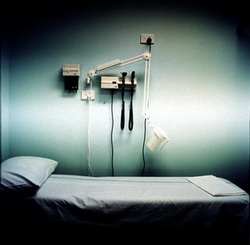Hospital beds for children come in a wide variety. Children have different needs and different requirements to adults or older people. When children get sick, they are scared of going to the hospital or staying there for long periods. First of all, they don't get to play as much and they are required to stay in bed more than they are used to. Parents wonder why hospitals simply do not change their pediatric beds to replicate the ones at home to reduce the worry and unfamiliarity of using such bed. There are reasons for this.

Children's medical beds versus regular children's bed
Children's medical beds are far different from the ones you see at home, and they are also different from traditional hospital beds meant for adults. This is because the beds themselves have features that help children recuperate successfully. First of all, the bed itself is structured for infection control. Regular beds and mattresses are highly prone to microscopic life. They are great breeding grounds for bacteria and bugs.
At home, we don't mind as much as there are not many bugs around to affect your children's health. However, in hospitals, this is a different story. Hospitals are filled with sick people. Nurses have contact with these people, which is how the viruses, bugs and other microscopic life forms can easily spread. Children in hospitals have weaker immune systems and since they are sick, they won't be able to fight off these bugs. They will suffer even more.
Children's medical beds versus regular hospital beds
Children's medical beds are different from regular hospital beds as well. This is because children are smaller and they require smaller beds. Most children's medical beds have guardrails to protect the child from falling from the bed. The gaps from the guardrails have less than 3½ inches each, which helps prevent anything getting stuck in between the slats. Unlike adults, children, especially those aged six and below, are very impatient. They move around a lot and if you give them big beds without having special rails to guard them, they could easily fall. It could be very harmful to them. Parents won't be able to leave their child, even for a second, knowing that their child might fall off the bed, which is very inconvenient in the long-term.
Aside from this, children's medical beds also have special mattresses that prevent them from having bedsores. When children are in hospital they stay in bed for longer periods. They are prone to bedsores or backache. To prevent this from happening, hospital use a special mattress meant for this purpose. They use either bubble mattresses or air mattresses, so that the back of the body, or other body parts, can breathe comfortably in spite of constant contact with the bed. Some children on extended bed rest may be at risk of other complications that may cause more sickness. Bedsores may seem a little problem but if an ordinary mattress was used for a long time the bedsores may become ulcers, which could them lead to more serious problems like sepsis.
